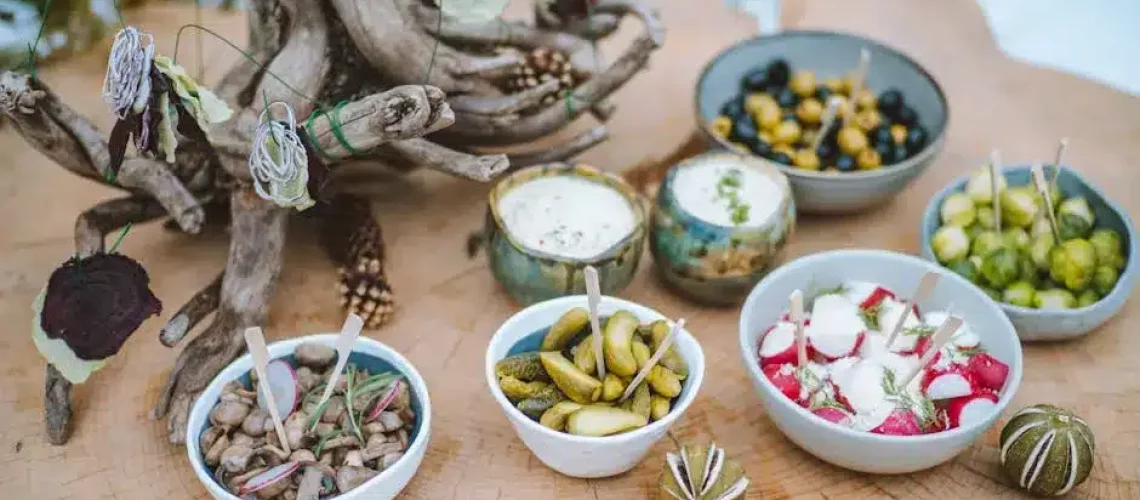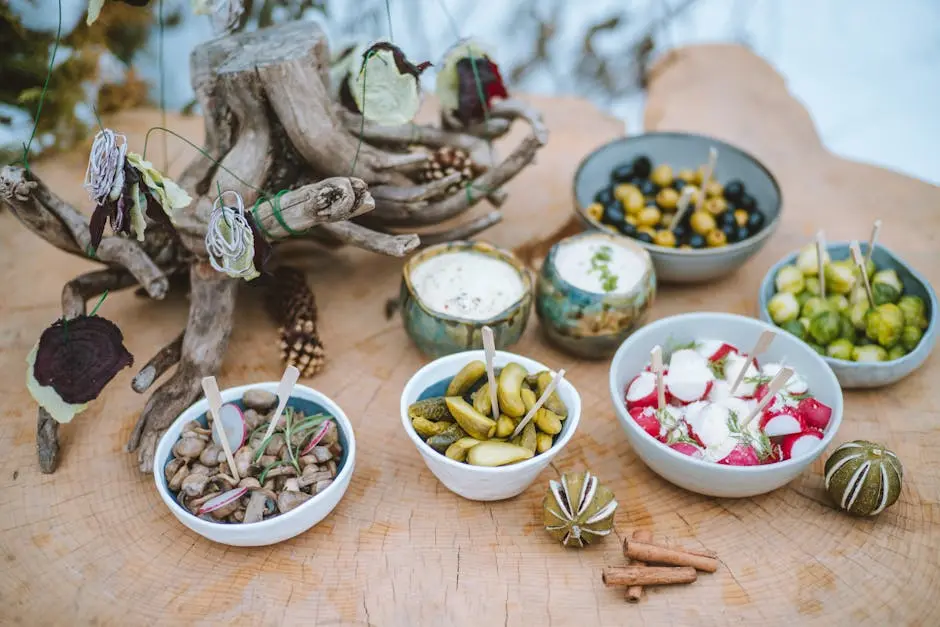In the crowded aisles of a grocery store, standing out is crucial for snack brands. The packaging is the first thing customers see, and it can make a big difference in capturing attention. In this blog, we’ll explore various packaging features that enhance visibility and attractiveness on the shelf, ensuring your snack is the one shoppers reach for.
1. Color Psychology in Design
Colors play a crucial role in packaging, as they can provoke emotions and draw attention. Understanding the psychology behind colors can help in designing packaging that stands out. For instance, red is often linked to excitement and appetite, making it a popular choice for snack packaging. Meanwhile, green can evoke a sense of health and natural ingredients, appealing to more health-conscious consumers. This strategic use of color impacts not only perception but also purchase behavior. With so many products fighting for shelf space, leveraging color psychology can give your brand a distinct edge.
Incorporating vibrant colors strategically can significantly elevate a product’s visibility. Bright hues can attract the eye from a distance, whereas softer pastel shades may appeal to a niche audience seeking gentler visual aesthetics. By analyzing consumer demographics and tailoring color schemes accordingly, brands can effectively tap into their target market’s preferences. This approach not only enhances shelf presence but also fosters brand recognition and loyalty over time.
2. Unique Shapes Capture Interest
Unconventional shapes can make a snack package more noticeable. By deviating from the traditional rectangular or circular forms, brands can create a memorable visual impact. Imagine seeing a snack in the shape of a hexagon or a triangle amid conventional forms—it immediately stands out. This not only captures attention but makes the package feel special and unique. Additionally, these shapes can be designed to optimize shelf space, allowing for clever stacking and display that further enhances visibility.
3. The Power of Creative Illustrations
Illustrations can convey brand stories and values, making packaging more relatable and engaging. Unique artwork can captivate new customers and inspire loyalty. When illustrations reflect the content’s essence, they create an emotional connection with consumers. This can be particularly effective in family-oriented products where storytelling can enhance the market appeal. Whether it’s through whimsical characters or sleek, modern graphics, striking illustrations can speak volumes about the brand’s personality and promise.
4. Impact of Bold Typography
Typography isn’t just about conveying information; it’s also an art. Using bold, clear fonts helps in catching the eyes of consumers and creating a strong brand identity. A well-chosen typeface can reflect the product’s characteristics—smooth and elegant for premium snacks, playful and vibrant for children’s treats. Typography can also be strategically colored or textured to distinguish it from competitors. A well-designed text hierarchy not only provides clarity but also leads consumers through the essential information effortlessly.
5. Transparent Packaging for Product Visibility
Seeing the actual product can increase consumer trust and desire. Transparent elements in packaging, such as windows or fully clear designs, allow customers to anticipate the deliciousness inside. When consumers can view content, it builds assurance, particularly in the case of fresh or gourmet items. The transparency can be partial or complete, each offering distinct advantages. Partial transparency lures curiosity, while complete visibility pronounces honesty about the product quality, reassuring doubters instantly.
6. Eco-Friendly Materials Stand Out
Sustainability is more important than ever. Eco-friendly packaging not only attracts environmentally conscious customers but also reflects positively on the brand’s image. Biodegradable materials or recycled content indicate a commitment to environmental responsibility, a virtue appreciated by a growing number of consumers. Moreover, sustainable materials can be a bold talking point on the packaging itself, highlighting your brand’s awareness and responsibility in a world that increasingly values ecological consideration over conventional convenience.
7. Incorporating QR Codes and Digital Engagement
QR codes offer a bridge between physical products and digital engagement. This feature can enhance consumer interaction and provide valuable brand information. Scanning a QR code could take customers to recipes, stories behind the brand, or special promotions exclusive to online audiences. It fosters a connection that transcends traditional sales fronts, inviting customers to experience a brand ecosystem rather than a one-time purchase. By merging physical packaging with digital realms, brands innovate how consumers experience snacks, extending interaction beyond the purchase.
8. Texture That Invites Touch
Adding texture to packaging can appeal to the tactile senses of consumers, making them more likely to pick up a product. Whether it’s a soft touch for a comforting feel or a more rugged exterior suggesting bold flavors, texture engages another layer of sensory interaction. This touch-and-feel approach is not only about creating an immediate physical connection but also about crafting a sensory memory that leads to brand recall. Differentiating through texture transforms packaging from a mere wrapper to a hands-on brand experience.
9. Convenient Resealability Features
Practical resealability features not only keep the product fresh but also add considerable value, encouraging repeat purchases. Resealable zippers or Velcro can extend product life and maintain quality, benefiting the buyer with each use. In a world where partial consumption is common, especially with families or on-the-go consumers, intelligent packaging design provides the necessary convenience. This feature subtly communicates that the brand cares about customer satisfaction and reduces wastage—qualities increasingly significant in sustaining consumer loyalty.
10. Minimalist Designs Speak Volumes
A clean, minimalist approach can convey sophistication and trust. It focuses attention on key elements, helping a product to stand out on the shelf. Minimalist designs strip back unnecessary visual clutter, leaving space for the essential features to make an impact. This reduces informational overload and taps into a modern aesthetic that resonates with consumers seeking elegance and simplicity. Through the artful use of whitespace and restraint, minimalist packages tell the brand story without over-promising.
11. Seasonal and Limited-Edition Designs
Limited-time packaging encourages quick decision-making from consumers. These designs can create urgency and highlight special offers. By tapping into festive motifs or cultural themes, brands can make products seem timely and relevant, aligning with specific seasons or trends. This not only spurs immediate sales but also gives loyal customers something novel to look forward to. Embracing seasonal designs helps to cultivate a limited-edition allure, thereby stimulating purchases during key periods with fresh designs and thematic alignment.
12. Strategic Use of Foil and Metallics
Metallics add a touch of luxury and distinction to packaging, making it more attractive and giving it an upper edge over competitors. Gold, silver, or holographic finishes can reflect light and draw eyes instantly, enhancing the premium perception of a product. Whether the entire package shimmers or subtle metallic accents are used, this technique effectively signals quality and exclusivity. Brands can manipulate light reflection through foil, catching customers’ attention with an unexpected flash, invoking the allure of luxury goods.
13. Integration of Known Characters and Icons
Using familiar characters or icons can create an instant connection with customers, leveraging existing popularity to boost shelf presence. Characters from popular media can suggest fun and creativity, immediately resonating with specific demographics such as children or fans of the franchise. The emotional connection from beloved icons can extend loyalty to a product. Whether aiming for nostalgia or modern appeal, the integration of recognizable figures in packaging design engages an already interested audience, securing immediate recognition.
14. Clever Taglines That Resonate
A catchy tagline can linger in consumers’ minds, making a product memorable and encouraging brand loyalty. These taglines distill the essence of a message into a short, impactful phrase that speaks directly to consumers’ desires or values. Cleverly crafted, they can become synonymous with the brand, driving long-term sales and engagement. Combining wordplay with simplicity and relevance creates a message that resonates long after the initial encounter, embedding itself in the consumer consciousness and often becoming part of popular culture.
15. Interactive Packaging Experiences
Innovative interactive packaging not only captures attention but also engages consumers longer, creating a memorable experience. Whether through augmented reality, packaging that mimics a game or a product that unfolds into a puzzle, interactiveness invites exploration. This transforms packaging from passive to active, converting a simple purchase into an engaging experience. By tapping into the consumer’s curiosity, brands use playful interaction to reinforce product enjoyment and consumer relationship, ensuring the snack becomes more than food—it becomes an experience.

